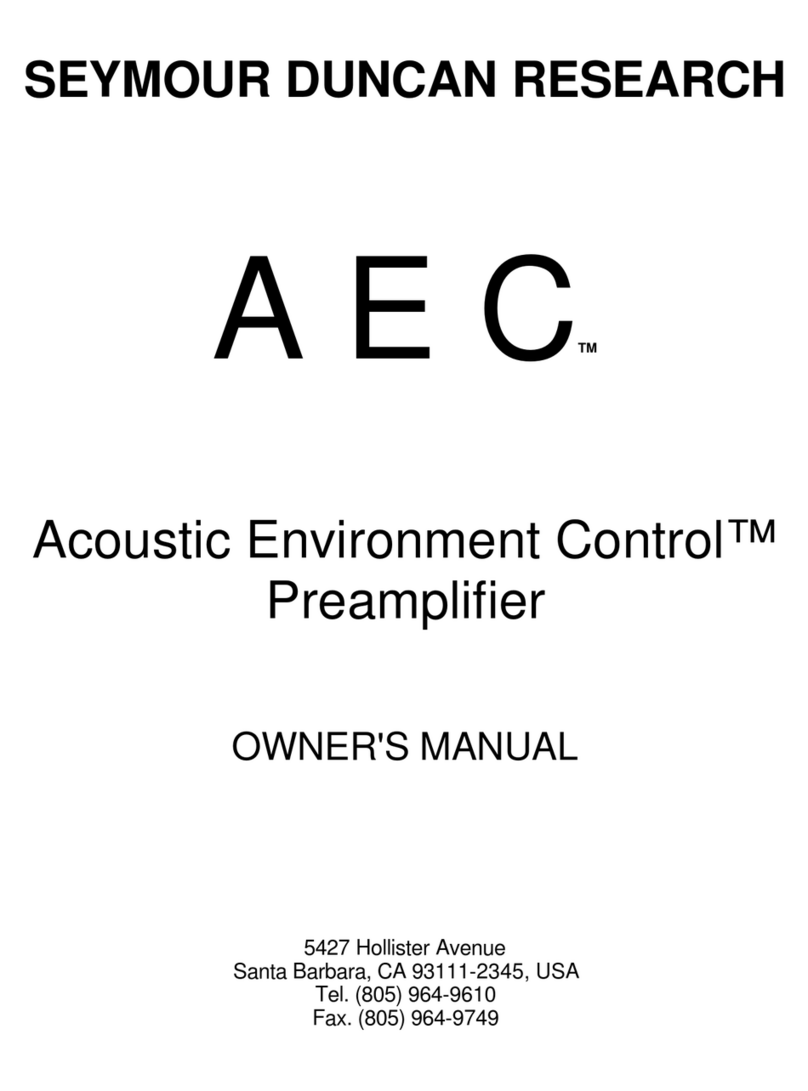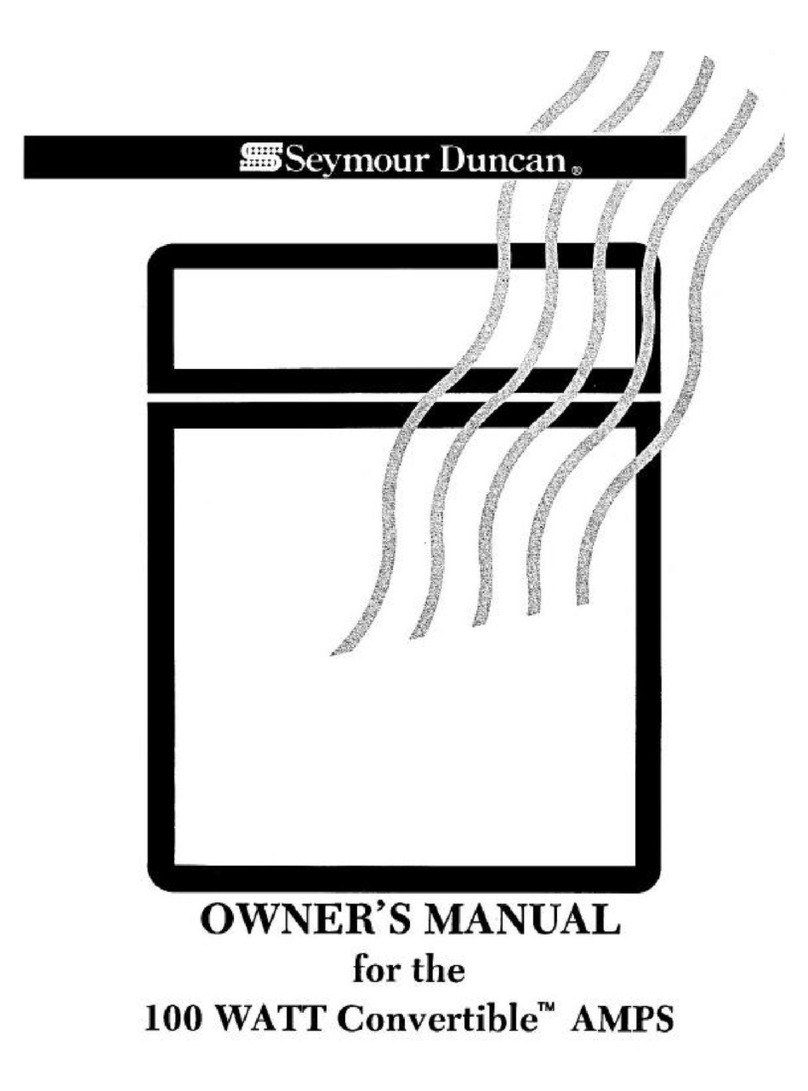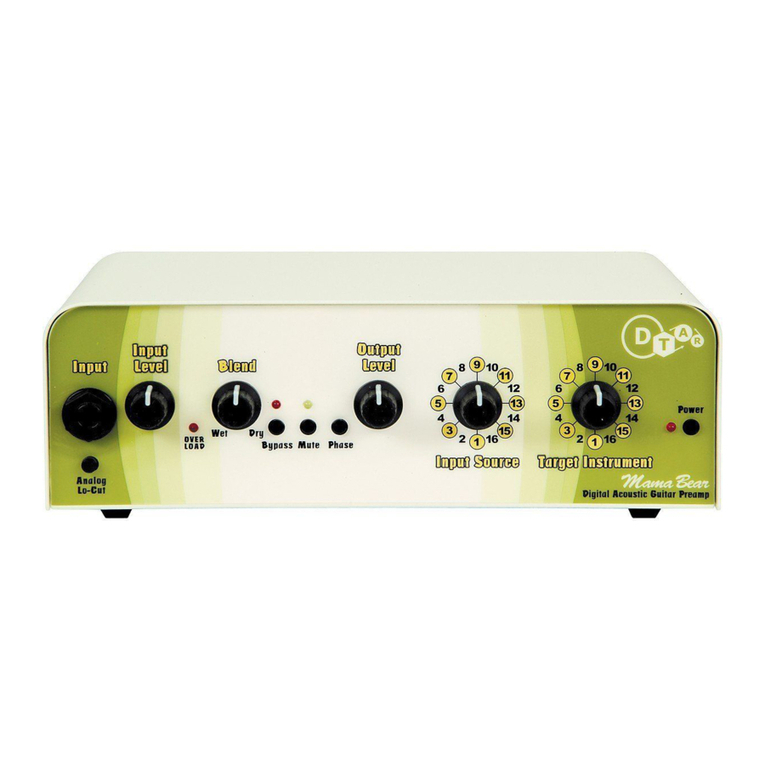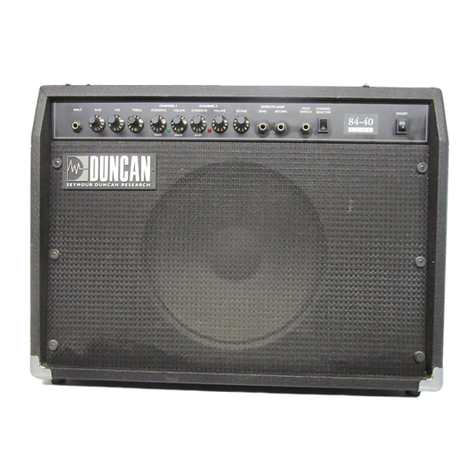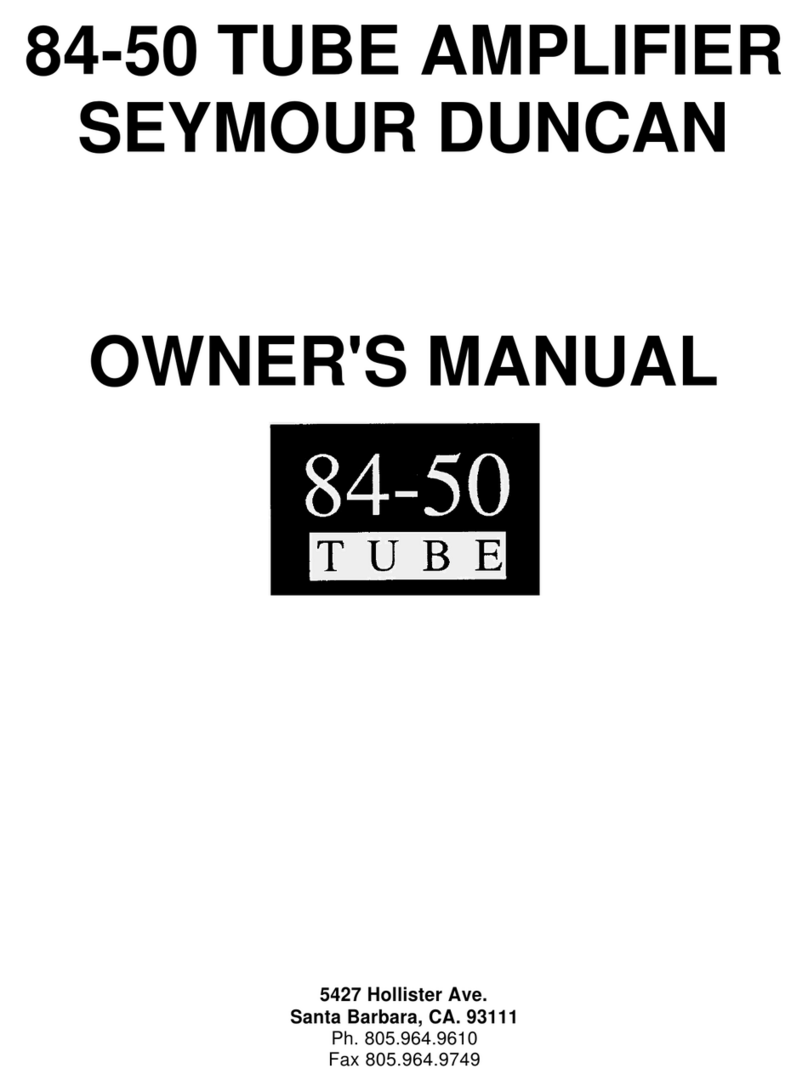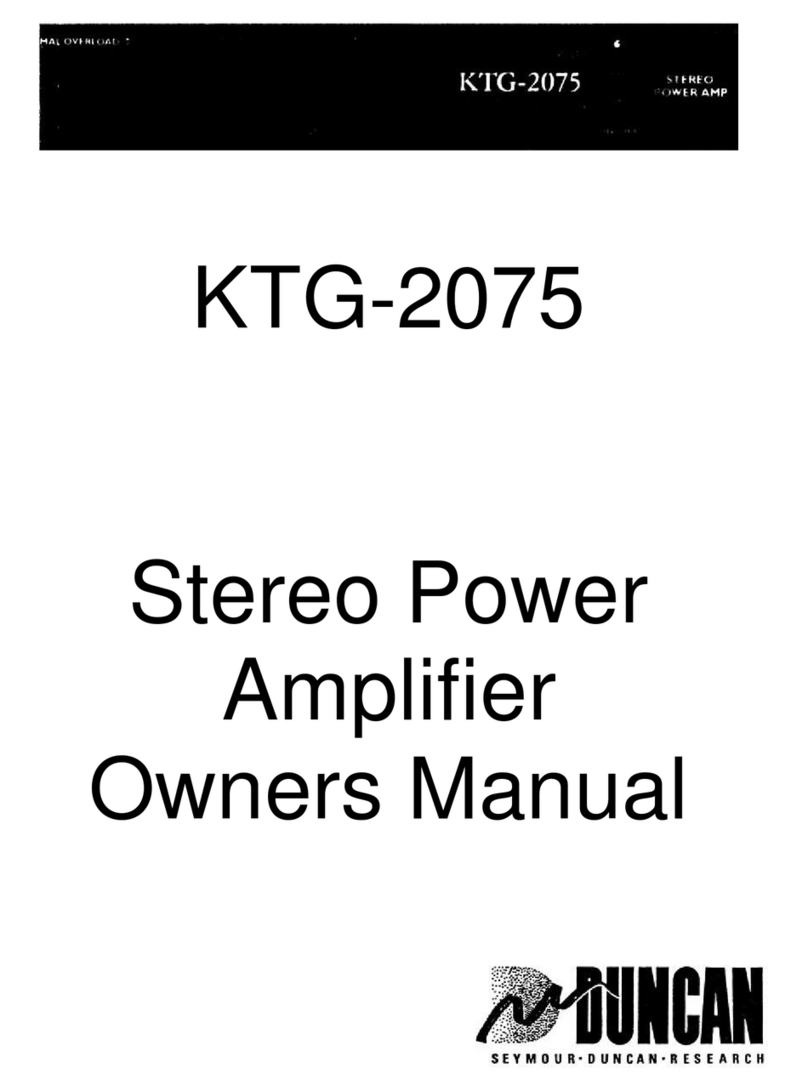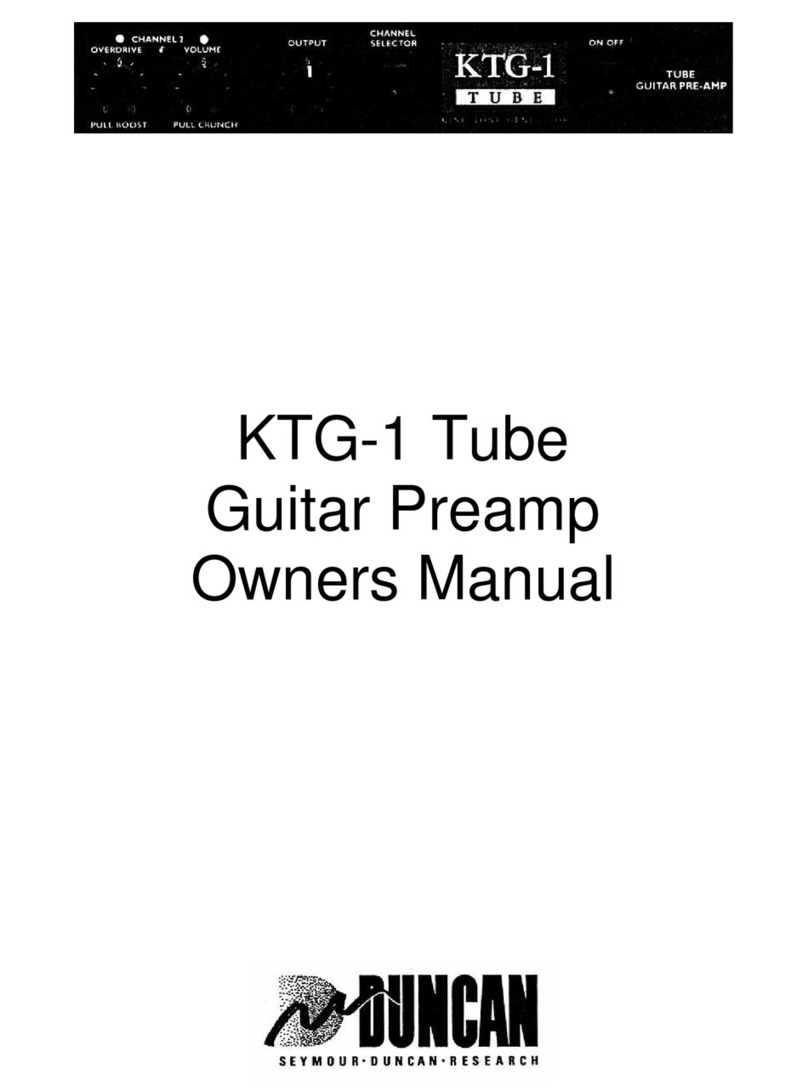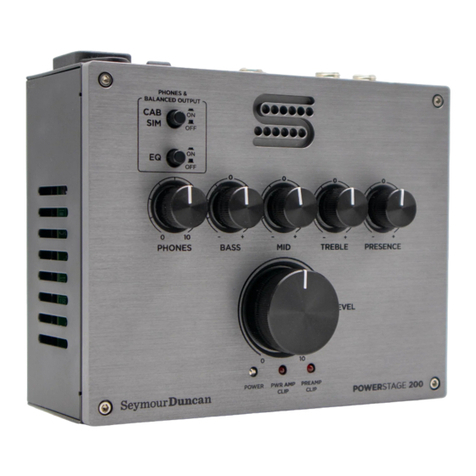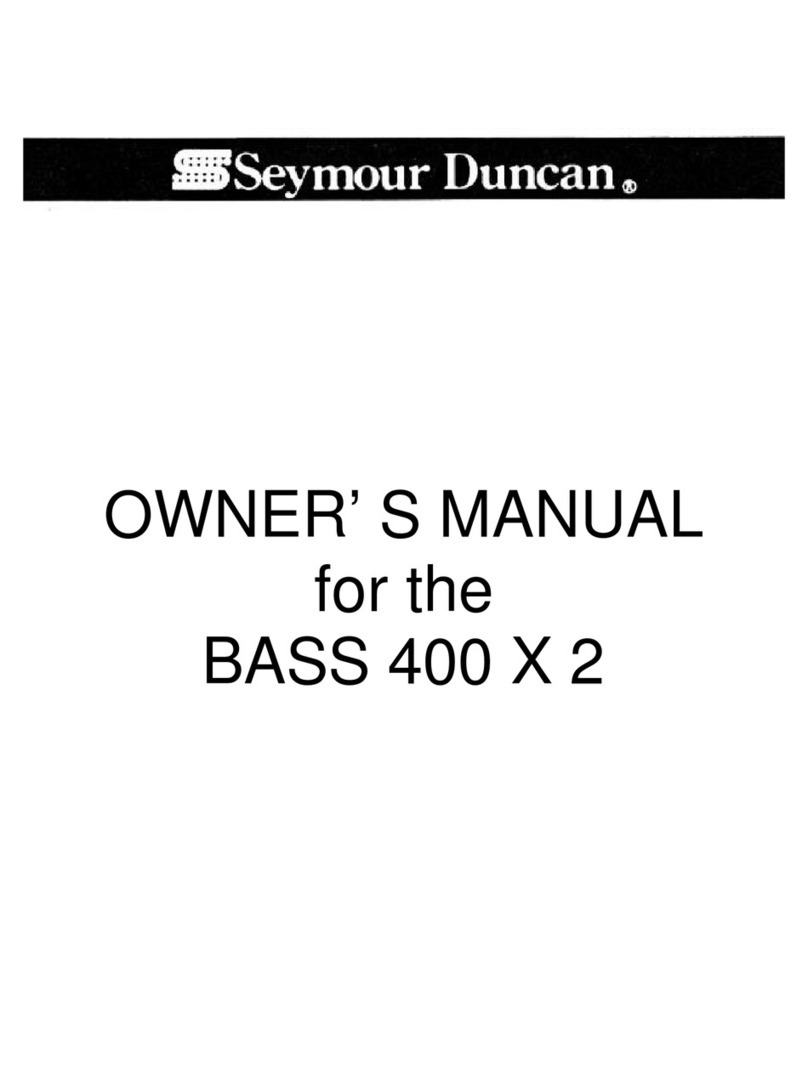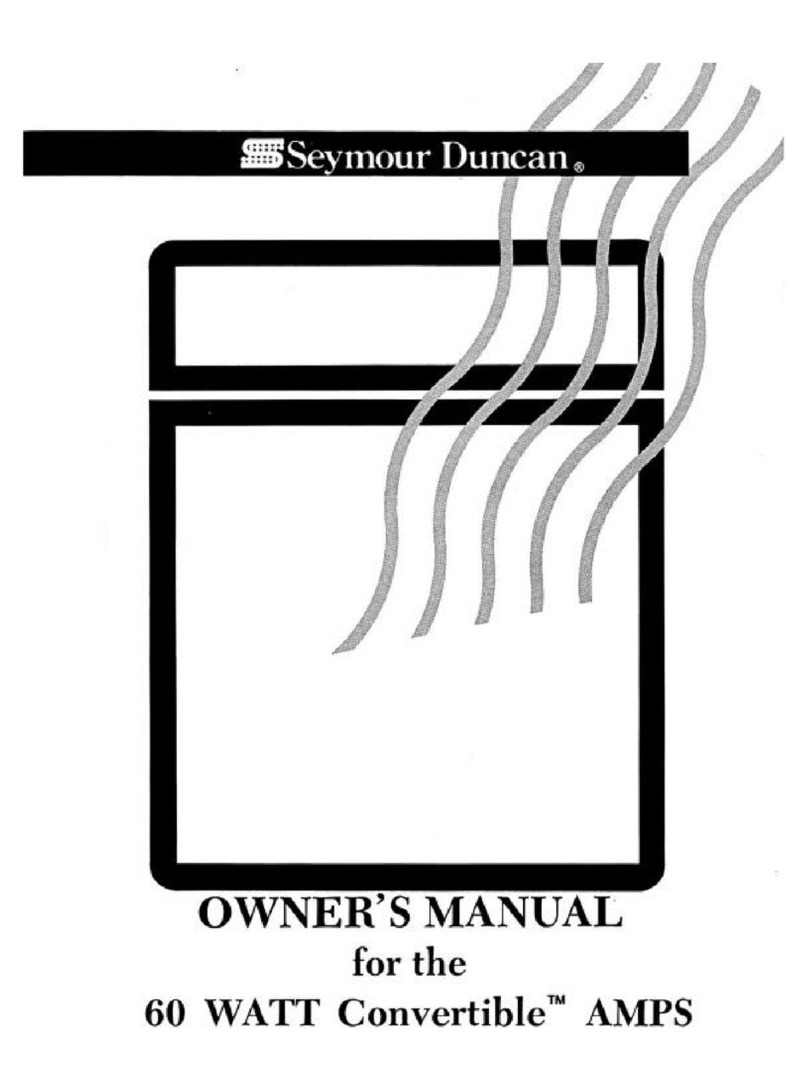
Introduction
For years, acoustic guitars have relied on
pickups for amplification, but even the best
acoustic guitar tone is reduced to an oversimpli-
fication of its true complexity when amplified.
Mama Bear takes your acoustic guitar’s tone
into the digital realm through its 32-bit digital
signal processor. Then it restores the natural
body resonance and provides you with a broad
range of sonic enhancements that make your
guitar sound its absolute best when amplified or
recorded. Because of its input source matching
capabilities and its tonal shaping that emulates
the complexities of 16 classic acoustic guitars,
Mama Bear will take your guitar into previously
uncharted sonic territories.
Mama Bear is a unique digital signal processor
preamp/effects unit featuring AGETM (Acoustic
Guitar Emulation) technology that improves
the character of amplified acoustic guitars by
adding the spatial dimension that no pickup
system or analog effects can produce alone.
It is designed to work with all acoustic guitars
outfitted with magnetic pickups, under-saddle
acoustic transducers and electric guitars with
piezo bridge saddles. It is not designed to work
with microphones, soundboard transducers or
accelerometers. Mama Bear provides you with
the means to give your acoustic guitar the sonic
qualities of a broad range of great-sounding
acoustic guitars, both vintage and modern.
More Important Stuff
Mama Bear can be used as a stand-alone
preamp or placed in the channel insert loop of
a mixing console. In addition, Mama Bear has
a balanced direct output to interface with
recording consoles or PA systems. Therefore,
it’s not only perfect for the solo guitarist or
player in a group, but it’s also a great tool
for anyone running a sound system in which
acoustic instruments are being amplified. You
can quickly bypass the AGETM sonic shaping to
hear what your guitar sounds like unprocessed,
plus you can blend the straight sound of your
guitar with the processed signal, allowing an
incredible range of new acoustic tones. With
Mama Bear, it’s possible to make a fine-quality
acoustic guitar sounds its best; plus, it smooths
out and improves the tone of lower-quality
guitars or those with lower-quality pickup
systems. Mama Bear works equally well with
steel-string and nylon-string acoustic guitars,
providing a wide range of tone-shaping options.
The sonic qualities of hybrid instruments that
employ magnetic and under-saddle transducers
can also be improved, smoothed, or altered.
Despite giving you unprecedented control in
sonic shaping of your acoustic tone, Mama Bear
is simple to use. With just two controls—Input
Source and Target Instrument—you can:
1. Alter or smooth out the response of your
guitar’s pickup. Surprisingly, even the best
acoustic guitars with the best pickups often
need fine-tuning due to the sonic inconsisten-
cies of amplifiers or speakers, or the way
pickups and speakers interact with your instru-
ment. Rather than spend hours experimenting
with graphic and parametric equalizers (or
replacing a low-quality pickup), you can put
Mama Bear’s advanced signal processing
to work balancing the tonal range from low
to high. You’ll find that placing Mama Bear
between even the best pickup/guitar combina-
tion and amplifier will improve the tone.
2. Overlay 16 “sonic signatures,” the sound that
comes from the interaction of wood and air in a
guitar, onto the sound produced by your strings,
fingers, and guitar. These “sonic signatures” are
based on some of the greatest guitars ever built.
MAMA BEARTM
3
